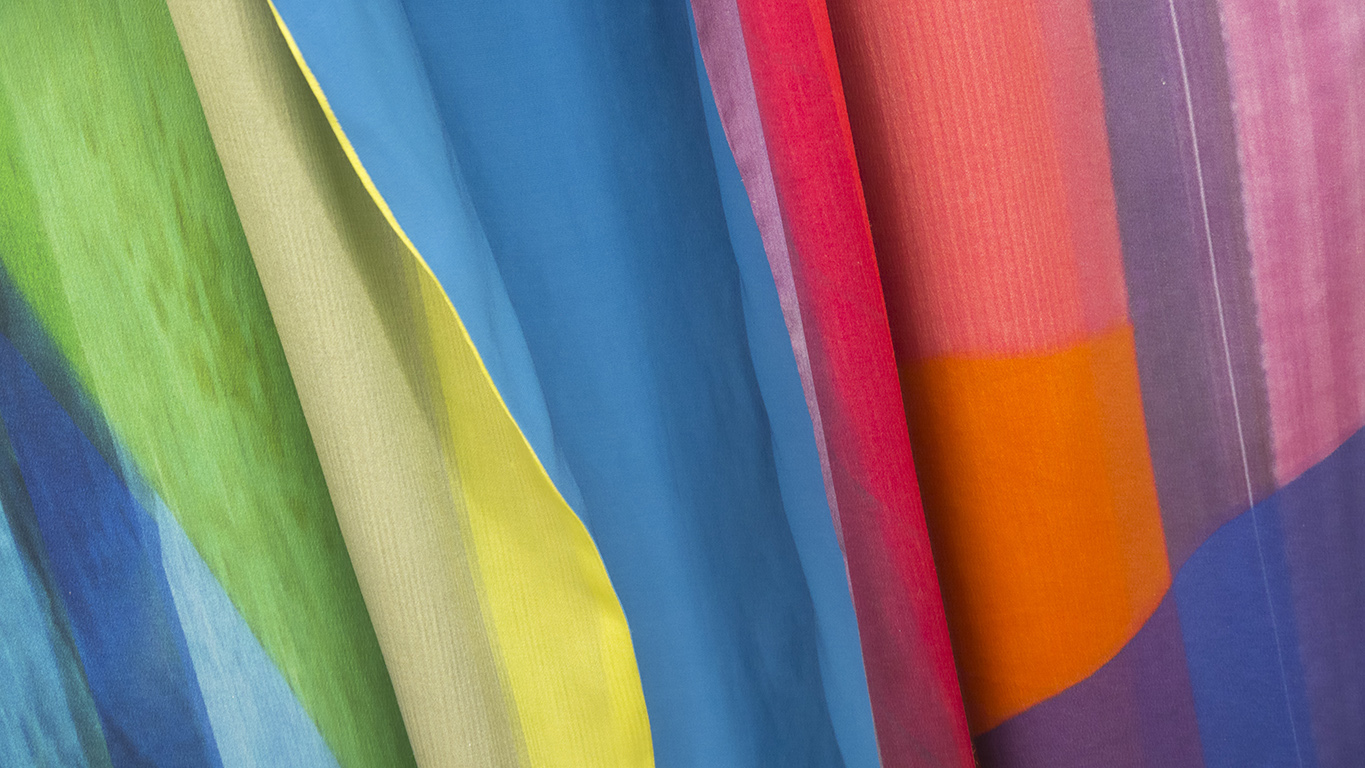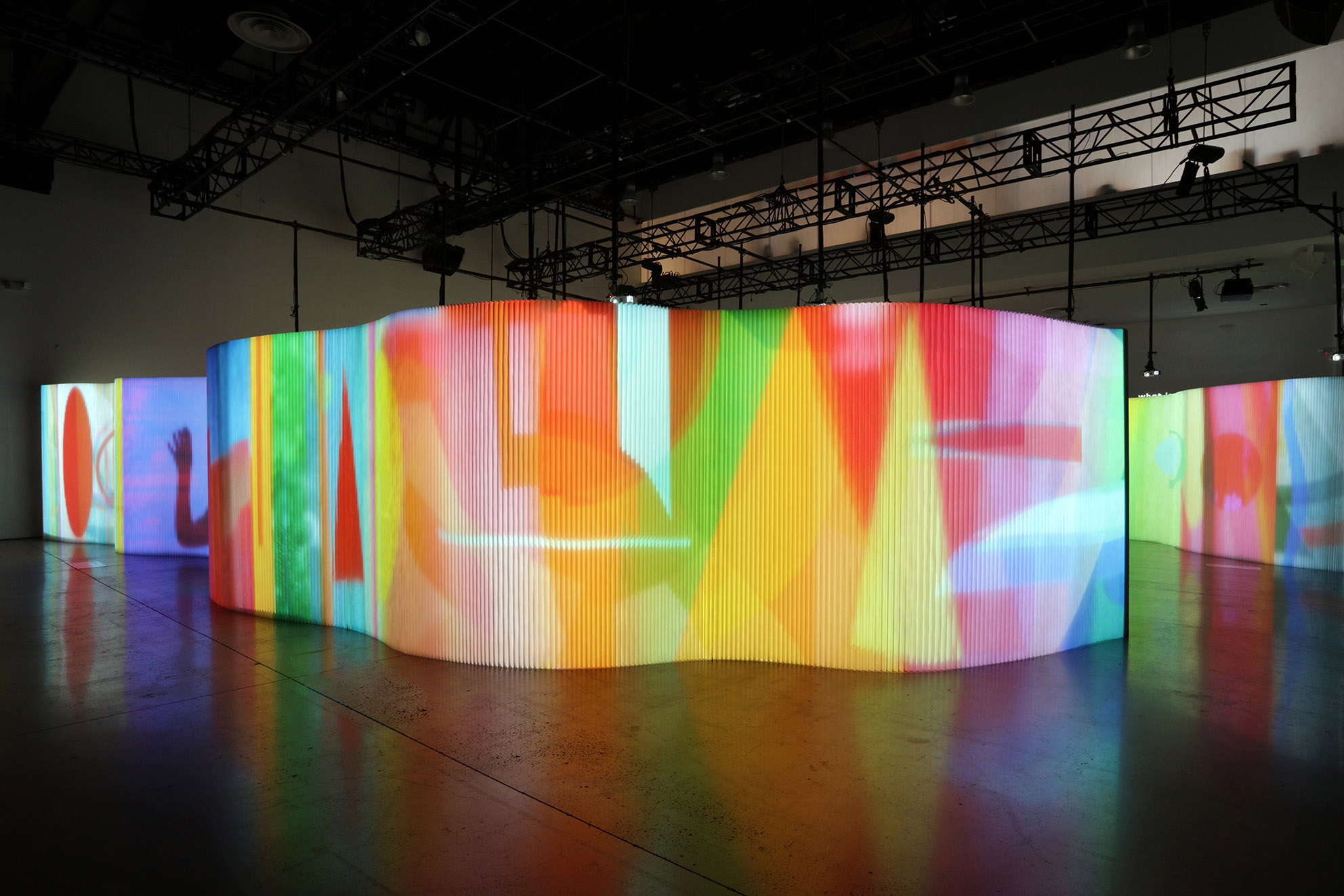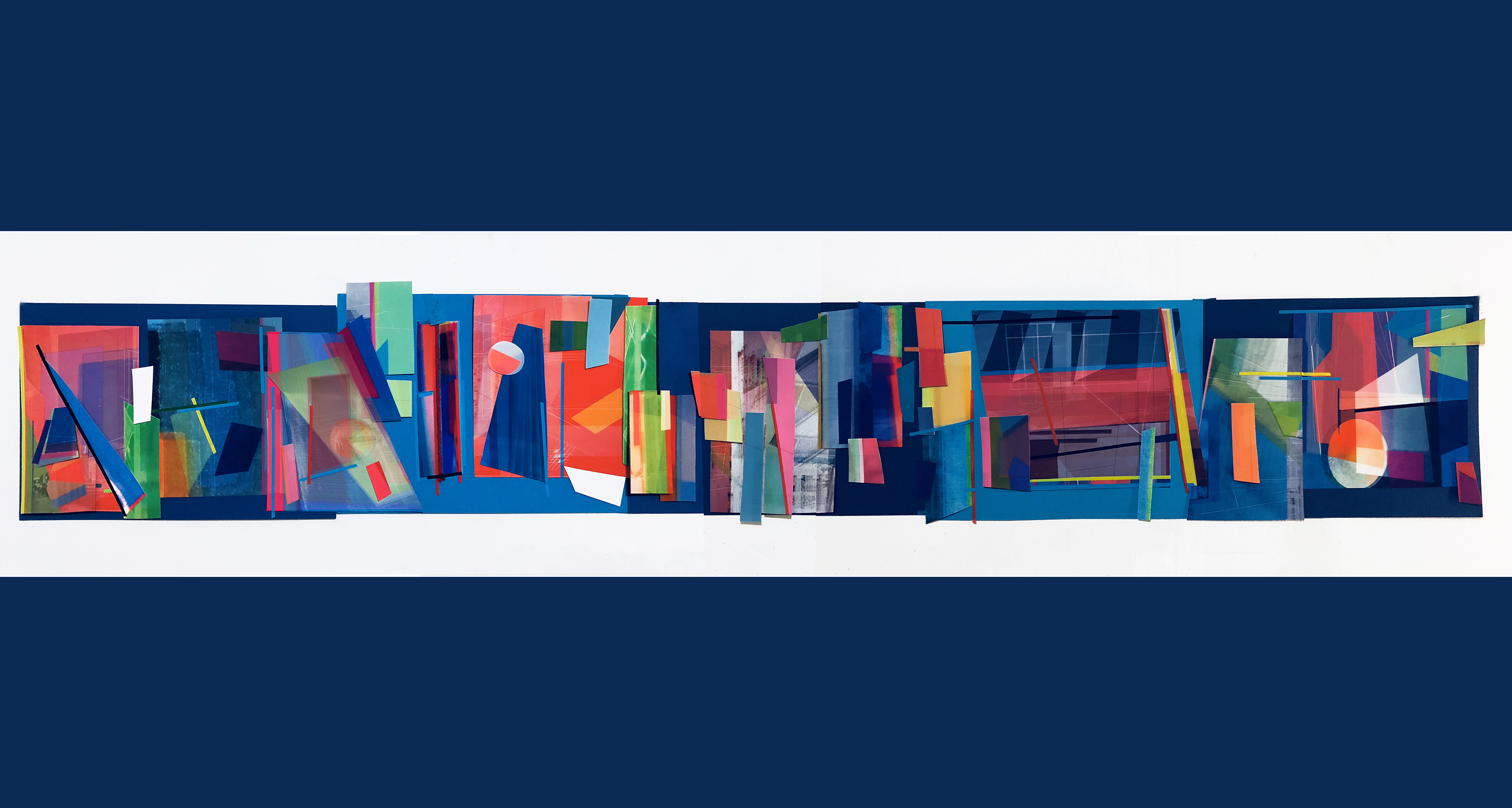Artist Monika Bravo reveals to Dorothée Dupuis, director of Terremoto, the spiritual tools that allowed her to weave with each other her life and art, as well as some spiritual advises about consciousness awakening for the 2020 decade.

Dorothée Dupuis: This issue of Terremoto focuses on the structures that sustain the art world. We have known each other for several years, and even though we have yet to work together, we have had sustained conversations about our activities and we are familiar with each other’s work. We belong to worlds that intersect: you, Colombian in New York, and me, French in Mexico City. We are both immigrants who have had to integrate into models that are different from our culture of origin. Could you speak to us a little about how you arrived in New York, why you left Colombia, and if you found what you were looking for in New York, personally and professionally?
Monika Bravo: New York has changed a lot since 1994. I could say that every seven years it becomes a different city, one in which one must readapt and regenerate. I arrived in New York on September 18, 1994, following the advice of my astrologer at the time, Camilo Lleras, who told me that I needed to leave Colombia before that date if I wanted to fulfill my destiny. I always knew that I wouldn’t live in Colombia because my moon is in the ninth house—the house of foreign countries, the search for truth, and expansion. I never formally studied art. I educated myself through experiences, although, from 1983 until 1995, I studied Fashion Design and Photography between Rome, Paris, London, and New York, living temporarily in Athens and Bogota before arriving in New York where I intended only to stay a year, but where I ended up staying 25. I didn’t come looking for anything; I only wanted to be an artist through life experiences and observations. In this city, I discovered the creative language that I have used to express myself thus far, in addition to teachers for my esoteric practices. New York welcomed me generously and offered me ways to remain faithful to my principles. This past summer, the summer of 2019, for example, I wanted to run away. Instead, I did an exercise of revision and releasing, in which I thanked that which no longer gave me happiness and ended up with only that which was essential. I let go of a lot of material things, except for my art archive and my collection of art that inspires me every day.
DD: Could you talk about your work and its connection to your other role in life: the personal path you are following to know and care for yourself better. For example, how do you share this path with other people and what does this path consists of? What philosophies or wisdom do you include? How do you use them in relation to your art?
MB: I have always been mystical. When I was four years old, I lost a helium balloon that was tied to my finger. From the window of the car, I watched it get lost on the horizon. From that experience, I gathered that balloons are like life—full of illusions. The painful loss of my father in an accident when I was eight years old makes me search in his underlined books for closer contact with him. He was a great reader of philosophy. Nietzsche particularly struck me in a synchronized way. Reading his texts, I sensed that we were connected by the loss of our parents. Searching for the presence of my father in his absence, I found a path.
Artistic and spiritual explorations have always gone hand in hand in my life. The desire to decipher my reality and to find the purpose of my existence has led me to become fascinated with those things that are constituted by a system that can be interpreted, such as foreign languages, cartography, the I Ching, Tarot, or evolutionary astrology. At different moments of my life since 1987, I have been a serious disciple of several teachers of Taoism, Qigong, Fengshui, acupuncture, nutrition, and ultimately the human design, and I apply all of these in my workshops and readings.
All of these disciplines derive from a structured base that consolidates them so that, in turn, they can be improvised intuitively. This is very important: the improvisation doesn’t exist without a good structure. Similarly, in recent years I’ve realized that not having studied art in an educational and academic system has been a blessing rather than a limitation since intuition has helped me forge the language that I have been creating since the beginning of my life.
Similarly, in my work, I involve the decoding of the language hidden amidst a piece’s various layers, either through ancestral diagrams, symbolic texts, maps, colors, or abstract forms. The technology and the materiality of each work are only the medium, a means of reaching those who experience it, like poetry. There is a necessity in the desire to decipher the symbols, the coordinates. There is present in the work an exploration through which I study the notion of time and my perception of it in order to ask myself if the world we live in is nothing more than a mental construct. These two points, time and space, are always connected in my work through emotion and memory; through them, I seek to materialize spiritual and metaphysical questions in spatial and sensitive ways.
Two-thousand-nineteen has been a year of consolidation and integration—that is to say, a time of coherence in relation to the dissolution of all the categories that have limited me from being able to express who I am without having to define myself. For fear of being judged, it took me time to accept and reveal this mystical part; I feared the rejection, the abandonment of my artistic trade. However, the only one who was judging and limiting me was myself. I think the era of Enlightenment, which placed so much importance on reason, has created an unsustainable dystopia in which we the human species have separated ourselves from nature in order to believe ourselves to be superior to her without realizing that we are part of her: we are spirits incarnate. It amuses me to think that, in ancient philosophy, the word “enlightenment” refers to observing reality as it is, without the veil of illusion and idealization. Intellect is very important, but it can’t be the epicenter of all decisions; feeling is the correct way to navigate this reality. We need to observe how we respond to situations instead of always reacting. This makes us wise.

DD: I have used your astrological services which must be implemented in a framework of trust, although that doesn’t make them exempt from economic remuneration. What’s your relationship with money? Not only regarding these types of services but also with respect to the creation of value in the art world.
MB: For me, there is a direct relation that exists between the value of things and self-esteem: knowing how to have a relationship with myself, with sustainability, with how I eat, and with keeping a roof over my head. This means having the power to decide to know how to value the essential, which gives me security and thus being able to negotiate those needs with others. If I value myself first, others—the rest—will value me equally.
When I arrived in New York 25 years ago, it was a shock to work for hours. Being very fast, I learned to charge for work, not for hours. When I began selling work, the formula was as follows: separate out into thirds the value of production, my time, and how much I should be paid for commissions. How much money would be satisfying? In fact, the most interesting part of my astrological chart and human design point out that I can make others powerful by revealing how to value themselves. At the beginning of my career, I began to do public art commissions, this gave me a lot of financial security since I charged in advance and had to prepare paid proposals, like in the olden days, when art patrons asked artists and architects to develop large works, offering financial support throughout.
I honestly believe that artists have given the intermediary too much power. Take, for example, the unsustainable phenomenon of an art market that is based on going from fair to fair; who makes money there?
The owners of the land of the fairgrounds and those who organize the fair, both of whom charge in advance. For their part, galleries make bets as if they were in a casino, and the artists, well, they are the last ones on the food chain, when it is they who should be benefiting from the production of their work. Even carpenters, electricians, and transportation companies charge immediately. For me, this art market model hasn’t functioned for many years. I’m interested in different means of expression and distribution.
DD: Let’s talk about the state of the Earth. The other day, when I invited you to have this conversation, you talked to me about how in 2020 the earth is going to begin to wake up, that the feminine forces of the world will rise. Could you tell me about what this implies and what these changes will consist of? What can we expect of them in relation to today’s world? What attitude should we adopt in the face of these changes?
MB: We are approaching a complete shift out of the Judeo-Christian tradition: a tradition in which time has been perceived linearly and that has generated collective anxiety about a second messianic coming or, in other words, the end of the world—of a world. Through patriarchy, this feudal system has caused corruption and the massive consumption of fear has created a codependence that has given institutions—the church, and democracy—all of the power. In this way, a suffering that distorts human morale and spirit was established. This hegemonic culture handles manipulation like language—that axis that exists between blame and victimhood. It is necessary to have faith in the knowledge that criticism is very important as a means of discerning and not as one of damage, for the latter leads to guilt. Victimhood can be overcome through acceptance.
The perfect mantra for 2020 sounds like this: “If I accept my condition, I can transform the situation.”
It’s not a coincidence that the month of January 2020 offers us a great conjunction of planets that will begin to rapidly transform those very institutions of authority that today are synonymous with immorality and a lack of ethics. Ancient cultures speak of an end of the era of darkness that brings with it the opportunity to awaken and recognize humanity’s true potential, which lies in acceptance, integration with nature, and individual agency through harmony. It is not a cliché: we are one! What Henri Bergson defined as élan vital; emptiness, the ether, or quintessence; the dark energy of quantum physics; the Prana; the Qi—however you wish to identify it—that which unites us, whether it be unconditional love or the idea of the sublime and the absolute, of God or Buddha, and which we carry within each one of us.
On a more specific level, the integration of the feminine and the masculine will occur when we accept that the electromagnetic energies that govern this bipolarity are the laws of this plane. It’s not only a question of gender; Jung proposed that we identify and integrate the masculine into femininity and the feminine into masculinity: anima/animus. Chinese culture refers to this as TAI CHI (the great polarity) and Yin and Yang.
The attitude for 2020 is: I will be responsible for my decisions, I will not put this commitment onto another person or institution, I will integrate my differences, and I will observe my intolerances. This attitude will lead to an individual transformation in my attitudes, provoking a transmutation in familial, cultural, collective, and generational DNA. This will make movements like #MeToo, which originated prior to the change, help us let the patriarchy that lives within each of us die.

DD: Two years ago, I had a very intense case of peritonitis. During my long recovery, I felt the need to access other perspectives on my personal path, and so for the first time, you read me my astrological chart. You said that I was a person who in past lives had fought a lot for the well-being of my community and that I had to ask myself if this was what I wanted to do again in this life. What if in this life I had the right to take care of myself, to look after my own well-being? At that time, we talked about the possibility of not having children as a form of self-care in the face of the patriarchal order of reproduction as it is defined for cisgender women so that instead we could care for our inner child, who could have been neglected during childhood; instead of having another child, healing through the child within you. To conclude, could you tell me about your relationship with motherhood?
MB: I’ve never been Susanita from the series Mafalda by Quino. For me, the maternal part finds expression metaphorically in everyday life through my intuition, which is a space that generates fluidity. I made the decision not to be a mother very consciously. Through my work and reading my astrological chart, I am able to fulfill my life purpose, serving humanity in a creative way. I think the most important revolution for me is being authentic, and this means following my destiny. In my astrological chart, the line of destiny (north node in Cancer) is in the fifth house of children (to embrace my feminine authority by expressing myself creatively; Venus is in this same house). The moon that rules the north node is in Scorpio, a water sign, and it is in conjunction with Neptune, the planet of union with the sublime, which is also in the water sign in the middle of the sky. These archetypes translate in this way: my path is totally permeable, flexible, intuitive, and of absolute faith and leads toward a more docile acceptance that generates an exchange and the potential for responsibility, integrating all my emotional experiences and generating from them something that can connect, communicate, and inspire. This is my legacy. I’m interested in all the paths that will lead me toward integration of the spirit and manifestation of the form, toward an evolution of consciousness that lets me partake in a synergy, a horizontal hierarchy that makes each human being responsible for their own relationship to their environment so that we can co-create and survive in unity.




Comments
There are no coments available.